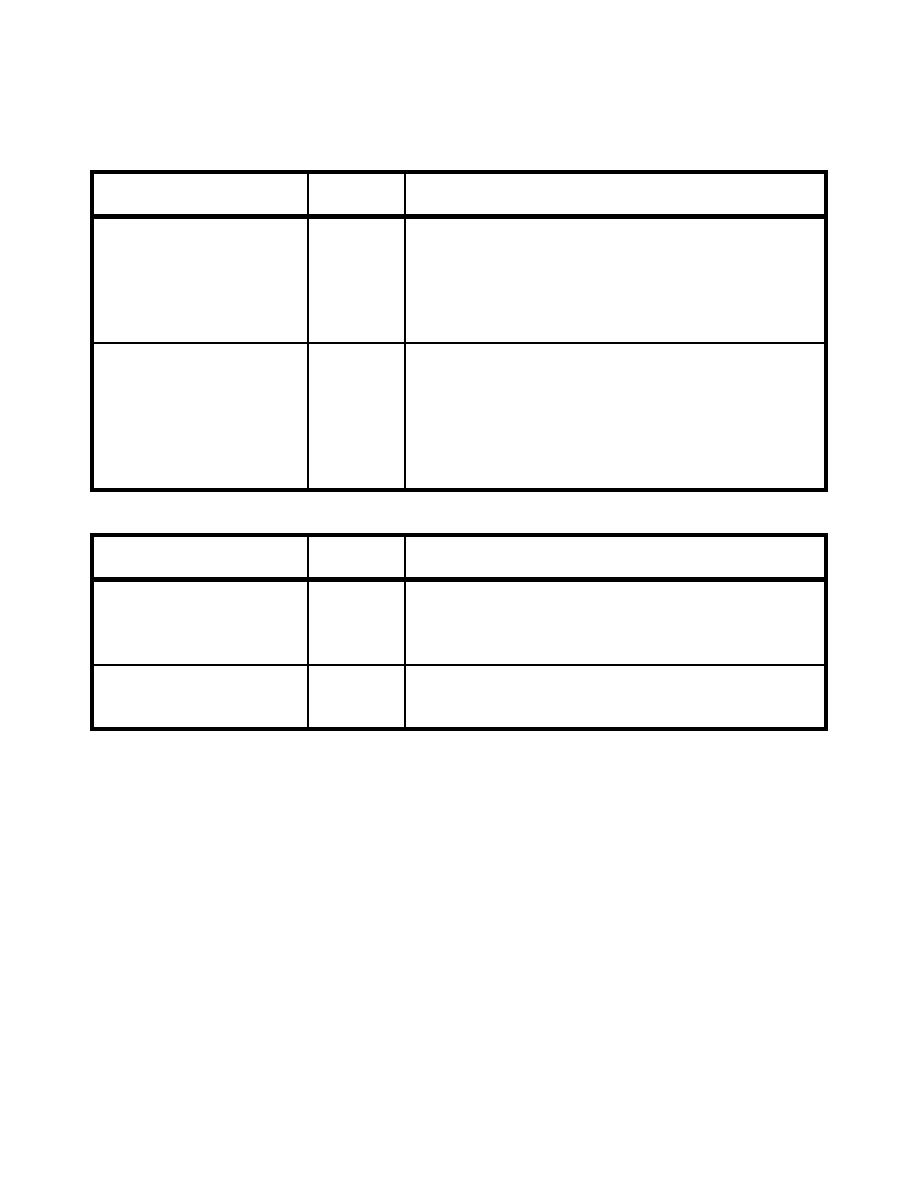
UFC 4-159-03
3 October 2005
Table 2-1. Examples of Fixed Moorings
a. Single Vessel Secured at Multiple Points
MOORING TYPE
FIGURE
DESCRIPTION
NUMBER
Pier/Wharf
2-1
Multiple tension lines are used to secure a vessel
2-2
next to a pier/wharf. Compliant fenders, fender
piles and/or camels keep the vessel offset from
the structure. A T-pier may be used to keep the
ship parallel to the current, where the current
speed is high.
Spud Mooring
2-3
Multiple vertical structural steel beams are used to
secure the vessel, such as a floating drydock.
This type of mooring is especially effective for
construction barges temporarily working in shallow
water. Spud moorings can be especially
susceptible to dynamic processes, such as harbor
seiches and earthquakes.
b. Multiple Vessel Moorings
MOORING TYPE
FIGURE
DESCRIPTION
NUMBER
Opposite Sides of a Pier
2-4
Vessels can be placed adjacent to one another on
opposite sides of a pier to provide some blockage
of the environmental forces/moments on the
downstream vessel.
2-5
Vessels can be placed adjacent to one another to
Multiple Vessels Next to
provide significant blockage of the environmental
One Another
forces/ moments on the downstream vessel(s).
4


 Previous Page
Previous Page
